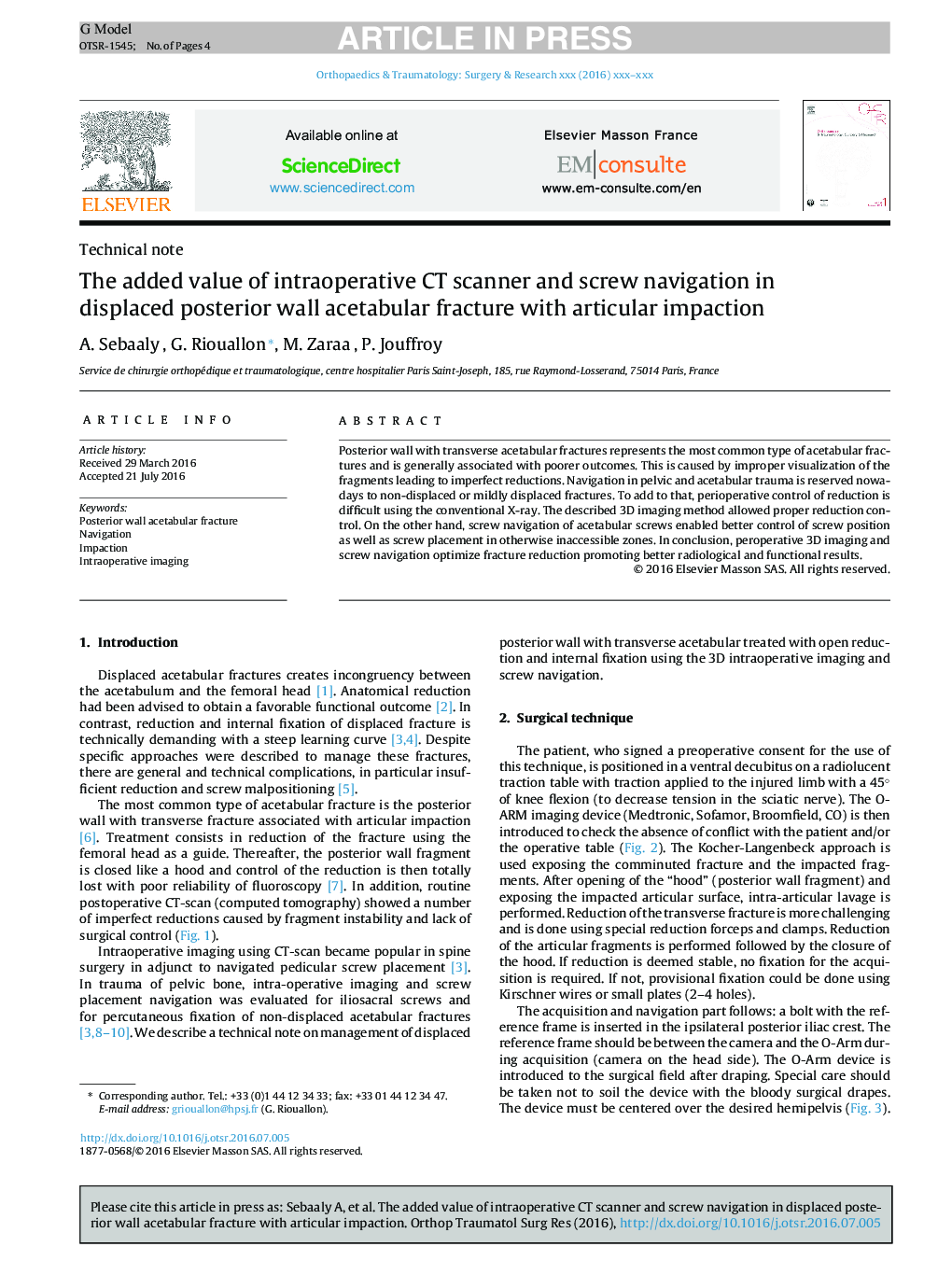| Article ID | Journal | Published Year | Pages | File Type |
|---|---|---|---|---|
| 5711255 | Orthopaedics & Traumatology: Surgery & Research | 2016 | 4 Pages |
Abstract
Posterior wall with transverse acetabular fractures represents the most common type of acetabular fractures and is generally associated with poorer outcomes. This is caused by improper visualization of the fragments leading to imperfect reductions. Navigation in pelvic and acetabular trauma is reserved nowadays to non-displaced or mildly displaced fractures. To add to that, perioperative control of reduction is difficult using the conventional X-ray. The described 3DÂ imaging method allowed proper reduction control. On the other hand, screw navigation of acetabular screws enabled better control of screw position as well as screw placement in otherwise inaccessible zones. In conclusion, peroperative 3DÂ imaging and screw navigation optimize fracture reduction promoting better radiological and functional results.
Related Topics
Health Sciences
Medicine and Dentistry
Orthopedics, Sports Medicine and Rehabilitation
Authors
A. Sebaaly, G. Riouallon, M. Zaraa, P. Jouffroy,
